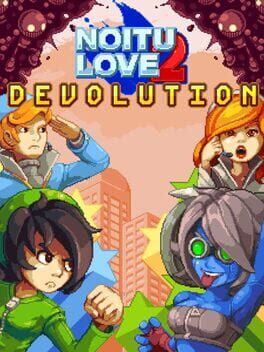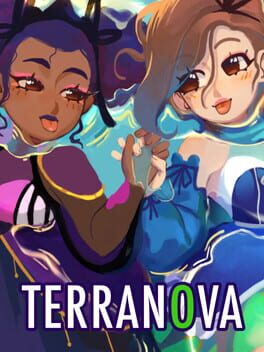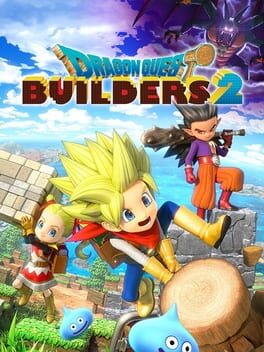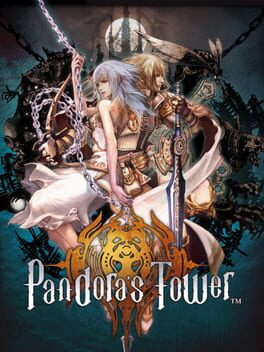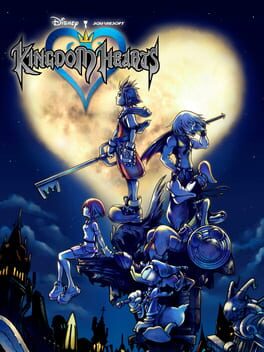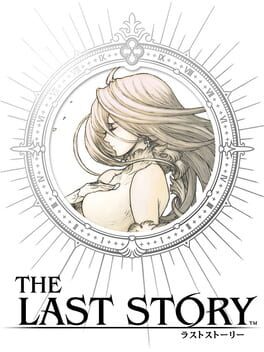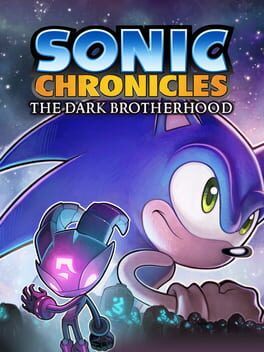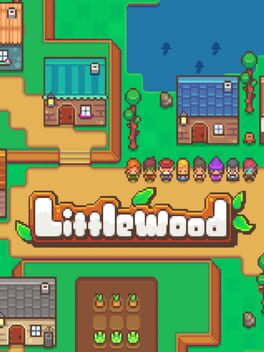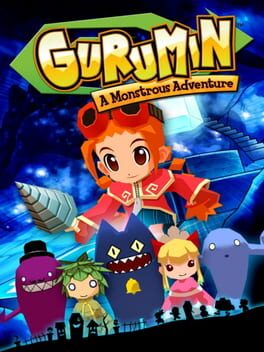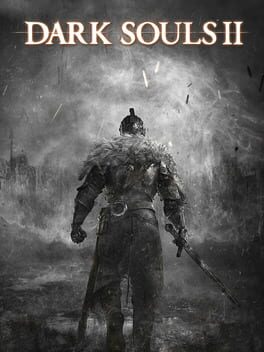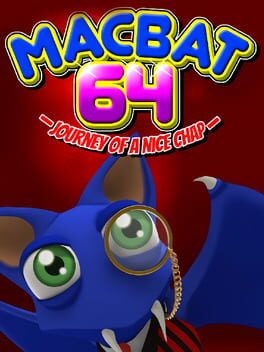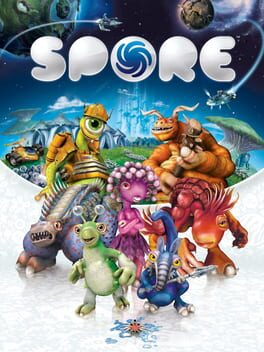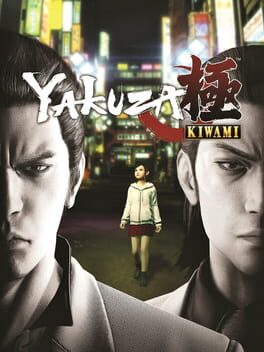MeiCheesecake
Pretty good beat-em-up/shooter/sidescroller! The playthroughs are short and sweet with some really cool bosses, the graphics look amazing even after all this time and the music slaps. Not too crazy in terms of lore, but understandable considering how simple the first game was. There are some nice callbacks to it still!
1993
I don't think there's a rating I could give this rating that would really convey what I think about it. If I was to rate it based on how much fun I've had with my overall personal experience with both of these games, I would say 3.5/5 would be accurate.
But that might not be saying much about the actual game itself, since I made heavy use of save states and fast forwarding and had a walkthrough on me at all times. These games can definitely be beat without those, but it'd take exponentially more time and investment that I personally can't afford to spend. It's definitely a game made for the era of game manuals, magazine hints, and sharing info and rumors with friends. There were a handful of pretty arbitrary "inspect this specific tile to get the item" moments that the NPC hints don't help with very much, and other design choices that would be very obtuse to get through even if you were playing in the right cultural landscape (can 4 tiles of poison really be considered a whole swamp?).
Dragon Quest I was the roughest for me. I've seen some variation of "a one hour game with X hours of grinding" floating around in relation to it and I definitely think its true. And while I didn't like grinding in theory, I can appreciate it in a narrative level. This is essentially a power fantasy, a lone warrior who has the blood of the hero in them and sets forth to gather all the ancient artifacts necessary to save the world, growing in power along the way until they can perform the same heroic feats as Erdrick himself. Leveling up truly feels like an accomplishment, you can immediately feel how much stronger you have become and even get a new spell if you're lucky.
Speaking of, I found it very interesting that most of your spells are essentially replacements for items you'd otherwise need to find or purchase (Radiant for torches, Return for wyvern wings). You only really have 3 main actions in battle - physical attack, magic attack, heal - and so with tougher enemies it can feel like trial and error until you find the right order to perform them in.
Trial and error is also how you find your next destination most of the time, as NPCs at most hint at a general direction you should be walking to. The map isn't awfully big, but your walking speed is very slow and the encounter rate is very high.
I was very impressed with Dragon Quest II right off the bat. I was not expecting an opening cutscene, and I wasn't aware this was the game that introduced groups of enemies. The difficult felt steeper at first, but it all makes sense once you find out that there's multiple party members now. The little fetch quest to recruit the Prince was pretty nice, wasn't expecting a scripted (as much as they could) sequence that went on for that many steps. The puzzle to recruit the Princess was nice as well, even if less elaborate. The party members don't quite have archetypes just yet (single vs multi target focus is the most I can call them), but they still feel somehow distinct from each other. The main character being the most unique since they don't have any spells. The multiple party members and multi enemy encounters really increase the scale and tension of the battles, I'd say it's on par with something like SMT when it comes to teaching you to use status effects by making your life miserable if you don't.
The first continent feels like a very polished experience. The environment was shaped in a way where you don't have as many choices at once and so don't feel as overwhelmed as DQ1. That said, that all goes away when you unlock the boat and I'd say it gets worse than the first one in terms of finding where to go. The NPCs that give you hints are now spaced hundreds of tiles and encounters apart. One of the five crests was found not by interacting with anything inside a building, but with one of the trees right outside it (stuff that involved finding non-exit tiles really weren't my favorite). There is an item that helps you find them, but it is literally hidden on an arbitrary point in the sea (literally) of similar looking tiles.
Aside from some particularly frustrating grinding and pathfinding moments, I've had fun with these games and understand better why they became a foundation for the whole genre. I can also understand some more references in Dragon Quest Builders 2, which was admittedly my main motivation for playing this.
But that might not be saying much about the actual game itself, since I made heavy use of save states and fast forwarding and had a walkthrough on me at all times. These games can definitely be beat without those, but it'd take exponentially more time and investment that I personally can't afford to spend. It's definitely a game made for the era of game manuals, magazine hints, and sharing info and rumors with friends. There were a handful of pretty arbitrary "inspect this specific tile to get the item" moments that the NPC hints don't help with very much, and other design choices that would be very obtuse to get through even if you were playing in the right cultural landscape (can 4 tiles of poison really be considered a whole swamp?).
Dragon Quest I was the roughest for me. I've seen some variation of "a one hour game with X hours of grinding" floating around in relation to it and I definitely think its true. And while I didn't like grinding in theory, I can appreciate it in a narrative level. This is essentially a power fantasy, a lone warrior who has the blood of the hero in them and sets forth to gather all the ancient artifacts necessary to save the world, growing in power along the way until they can perform the same heroic feats as Erdrick himself. Leveling up truly feels like an accomplishment, you can immediately feel how much stronger you have become and even get a new spell if you're lucky.
Speaking of, I found it very interesting that most of your spells are essentially replacements for items you'd otherwise need to find or purchase (Radiant for torches, Return for wyvern wings). You only really have 3 main actions in battle - physical attack, magic attack, heal - and so with tougher enemies it can feel like trial and error until you find the right order to perform them in.
Trial and error is also how you find your next destination most of the time, as NPCs at most hint at a general direction you should be walking to. The map isn't awfully big, but your walking speed is very slow and the encounter rate is very high.
I was very impressed with Dragon Quest II right off the bat. I was not expecting an opening cutscene, and I wasn't aware this was the game that introduced groups of enemies. The difficult felt steeper at first, but it all makes sense once you find out that there's multiple party members now. The little fetch quest to recruit the Prince was pretty nice, wasn't expecting a scripted (as much as they could) sequence that went on for that many steps. The puzzle to recruit the Princess was nice as well, even if less elaborate. The party members don't quite have archetypes just yet (single vs multi target focus is the most I can call them), but they still feel somehow distinct from each other. The main character being the most unique since they don't have any spells. The multiple party members and multi enemy encounters really increase the scale and tension of the battles, I'd say it's on par with something like SMT when it comes to teaching you to use status effects by making your life miserable if you don't.
The first continent feels like a very polished experience. The environment was shaped in a way where you don't have as many choices at once and so don't feel as overwhelmed as DQ1. That said, that all goes away when you unlock the boat and I'd say it gets worse than the first one in terms of finding where to go. The NPCs that give you hints are now spaced hundreds of tiles and encounters apart. One of the five crests was found not by interacting with anything inside a building, but with one of the trees right outside it (stuff that involved finding non-exit tiles really weren't my favorite). There is an item that helps you find them, but it is literally hidden on an arbitrary point in the sea (literally) of similar looking tiles.
Aside from some particularly frustrating grinding and pathfinding moments, I've had fun with these games and understand better why they became a foundation for the whole genre. I can also understand some more references in Dragon Quest Builders 2, which was admittedly my main motivation for playing this.
Short and sweet! A lot of Megaman vibes and overall very solid platforming. There was a weird difficulty spike at the end though, and the game does that thing where it doesn't let you play the actual final boss if you're on easy mode. That soured the experience for me, but overall still pretty good.
2020
Overall this game was pretty good! The use of roleplaying to show the characters projecting their emotions is very interesting and it works well, though I'd say I'd have liked for it to be a bit more on the nose on Effie and Sendaria's threads since they're usually the lengthiest.
Speaking of the latter though, my biggest issues with the game are related to her and how the game wants you to view and treat her to get the best ending. It's a matter of opinion at the end of the day but it really didn't sit well with me and soured the ending of the game for me a bit.
Speaking of the latter though, my biggest issues with the game are related to her and how the game wants you to view and treat her to get the best ending. It's a matter of opinion at the end of the day but it really didn't sit well with me and soured the ending of the game for me a bit.
This game is very interesting to me both gameplay wise and story wise. It's a pretty good mix of functional and modular building style, I rarely encountered bugs with the room detection system (aside from making fishing cages). Most of my troubles were with intentional features that are not communicated very well to the player, like how room height is determined by the door position and how wall hangings need to be on or below two blocks. My other big issue would be how difficult it is to figure out the settlement boundaries, especially on the isle of awakening. I can see some people getting fed up with basically going through the tutorial 4 times for each of the 4 major chapters, but I didn't mind it.
Aside from technical issues and some puzzling design choices, the building gameplay was very solid. It's a pretty good balance between modular and functional building. Some of the common issues I have with building and farming games were addressed pretty well here, even though not to the extent I would have liked. A lot of cool gameplay mechanics are introduced late in the game so you don't get a lot of time to mess with them until the post game. Probably for the same reason you're not really encouraged to build roofs.
I had never finished a Dragon Quest game before and never got close to the original trilogy, so I didn't catch on to most of the references until the very end. Without spoiling anything, I'd say this game messes with the source material (Dragon Quest 2) in a very interesting way. It's clearly a parody, but it doesn't make fun of the series in the way that feels cynical. It even uses some of the implications of a building game to make some interesting (but kinda shallow) points. If anything, it made me want to play actual Dragon Quest games so I can appreciate this game even more.
Aside from technical issues and some puzzling design choices, the building gameplay was very solid. It's a pretty good balance between modular and functional building. Some of the common issues I have with building and farming games were addressed pretty well here, even though not to the extent I would have liked. A lot of cool gameplay mechanics are introduced late in the game so you don't get a lot of time to mess with them until the post game. Probably for the same reason you're not really encouraged to build roofs.
I had never finished a Dragon Quest game before and never got close to the original trilogy, so I didn't catch on to most of the references until the very end. Without spoiling anything, I'd say this game messes with the source material (Dragon Quest 2) in a very interesting way. It's clearly a parody, but it doesn't make fun of the series in the way that feels cynical. It even uses some of the implications of a building game to make some interesting (but kinda shallow) points. If anything, it made me want to play actual Dragon Quest games so I can appreciate this game even more.
2011
This game has such interesting worldbuilding and overall plot, it's a shame it never got followed up in any way but it still works excellently as a standalone experience. Gameplay was smooth even without using motion controls (assuming it's even better if you do). Music and graphics are really nice. The crafting/gifting system felt weird at times - they executed it in the best way they could but it came out a bit cumbersome because of the flesh timer focus of the game.
2002
Controls are obtuse at times and I'd say I had a mixed experience with most worlds, but it's really charming an earnest. Surprisingly self contained despite the franchise's monstrous lore development in later sequels. A good first entry overall, I enjoyed my time with it even if I had to keep GameFAQs open constantly since the Traverse Town "go through 5 arbitrary loading zones then return to the previous map with no indication you should do so" section.
2011
I’ve had a really fun time with this game! I didn’t get all the subquests and didn’t find all the hidden dialogue, but I got all the optional chapters and clocked in at around 25 hours of gameplay. There’s not much variety in terms of game mechanics or minigames, but the base concept is so solid that I didn’t get tired of it until the very end when I found out I had missed two optional chapters before the end.
The voice acting in this game is amazing. I can’t think of a single instance of dialogue that made me cringe, all the performances are fine at worst and genuinely enhance the game experience at best. Like mentioned previously, it consists mostly of British accents.
Two names I want to highlight are Blake Ritson and Colin Ryan. The former has voiced a couple of Dark Souls characters, Alvis in Xenoblade and Aymeric in Final Fantasy XIV. Here he voices Jirall, a member of another royal lineage set to marry Callista before Zael arrives and messes up everything. He is the usual high and mighty yet cowardly minor member of a rich family you’d expect to see, but Blake really puts on an amazing performance and gives some nuance to his descent into madness.
The latter is most well known for his performance as Alphinaud in FFXIV, and his voice as Yurick here kind of sounds a lot like it (though respecting the nuances of the character). I might be a bit biased because I like Alphinaud, but I also think his performance is very good. He manages to nail the specific kind of apathy someone like Yurick would feel toward the world, and keeps his playful arrogant tone present even after the warming up.
The characters play off each other extremely well. You’d think having two pervert drunkards in your main JRPG party would make the experience unbearable, but my favorite lines of dialogue came from these two. Syrenne is blunt and simple minded (not in a bad way), making her character great for demonstrating how the war affects the common people. Lowell is mostly pure comic relief, but it's a high quality one, and he does have some sentimental moments towards the end of the game.
Dagran is probably the weakest of the cast, but only because his role throughout the story starts to rapidly decline as the game goes along until the very end. A good handful of chapters have him be on the sidelines or completely absent, but for good reason. He’s the most down to earth out of the cast, so his commentary could get boring if it weren’t for the wackier side of the party bouncing off him.
Zael is fine. I can see some people calling him generic or boring, and I wouldn’t exactly disagree. As the main driving force of a JRPG, he’s what you think he’s gonna be. No crazy twists, no super unique backstory – just a boy, his sword and his forbidden love.
When I heard that there were 44 chapters in total, I thought my playthrough would be at least 50 hours long. But the definition of a chapter here is different from the usual JRPG format. A chapter is usually only a couple of combat screens, a full map, or a breather in between those. And I like it! It gives focus to the moment-to-moment gameplay, having each encounter feel unique and well planned. There are no random enemy encounters, but there’s optional ones that you can do as many times as you want.
The combat system is probably the most unique aspect here. It’s mostly in real time, but with a focus on strategy. By default there is no attack button, you simply run up to enemies and Zael attacks them with his blade automatically. You can also use his crossbow to shoot enemies and survey the environment for setpieces that can be used to your advantage.
There’s a variety of enemies, but most of them are humanoid and have a clearly defined role: mage, healer, archer, warrior, or leader. This is where the tactical part of the game comes from. The strategic aspect comes not so much from what attacks you can use, but what kinds of enemies to attack first and how to get to them. If you’re familiar with RPG tropes, you’d correctly guess that killing off the healers and mages is your number one priority. Each enemy encounter has them in unique formations and environments that make that goal different and more difficult each time.
Of course, this system isn’t perfect. Your mages in particular have the tendency to get stuck in positions where their spells are hitting walls instead of enemies, and some of the combat situations are mechanically unfair due to your attacks having lower priority and speed than your enemies later on. But I wouldn’t say it’s a hard game overall – in fact I had a very easy time with it until the final boss. I’ve made use of the optional enemy encounters a couple of times, but mostly because I was excited to see the new combat situations I’d be put in and not for grinding.
The exchange of mechanical depth for positioning and theoretical strategy based gameplay isn’t for everyone, though. I’ve seen some people complaining that the game is too boring or repetitive for them and I can understand that. The controls also aren’t perfect, but I can’t say much since I was using the classic controller setup (and also emulating the game). One thing I’ll say is that aiming sucks with the joystick, and also that, even if having attacks be done automatically is the best choice in my opinion, there are moments where you want to weave through a crowd of enemies but you keep hitting them instead because of the proximity.
The music is fine! A lot of the songs aren’t very memorable outside of the game, but they blend into the environment well enough that they still enhance the experience in the moment. There’s a handful of songs that are memorable even without the gameplay though, such as Dance of the Dead and Invitation to Madness. By the way, the music was composed by Nobuo Uematsu! The Final Fantasy guy.
And finally, the graphics are really pretty for a Wii game! There’s some places where the textures look like mud, and I can’t say I’m particularly impressed with a lot of the character textures, but the environments are very well done. It’s one of the few Wii games that utilizes shaders to their full potential, and it shows. While sometimes they can make the scene just look blurry for no reason (the rain effect in particular is very funny), the lighting is phenomenal and the VFX are pretty elaborate.
There are a lot of minor complaints that pile up and make me not give this game a full rating, but they're very closely tied to the story and if anything I want more people to play this game and give it the recognition it deserves.
The voice acting in this game is amazing. I can’t think of a single instance of dialogue that made me cringe, all the performances are fine at worst and genuinely enhance the game experience at best. Like mentioned previously, it consists mostly of British accents.
Two names I want to highlight are Blake Ritson and Colin Ryan. The former has voiced a couple of Dark Souls characters, Alvis in Xenoblade and Aymeric in Final Fantasy XIV. Here he voices Jirall, a member of another royal lineage set to marry Callista before Zael arrives and messes up everything. He is the usual high and mighty yet cowardly minor member of a rich family you’d expect to see, but Blake really puts on an amazing performance and gives some nuance to his descent into madness.
The latter is most well known for his performance as Alphinaud in FFXIV, and his voice as Yurick here kind of sounds a lot like it (though respecting the nuances of the character). I might be a bit biased because I like Alphinaud, but I also think his performance is very good. He manages to nail the specific kind of apathy someone like Yurick would feel toward the world, and keeps his playful arrogant tone present even after the warming up.
The characters play off each other extremely well. You’d think having two pervert drunkards in your main JRPG party would make the experience unbearable, but my favorite lines of dialogue came from these two. Syrenne is blunt and simple minded (not in a bad way), making her character great for demonstrating how the war affects the common people. Lowell is mostly pure comic relief, but it's a high quality one, and he does have some sentimental moments towards the end of the game.
Dagran is probably the weakest of the cast, but only because his role throughout the story starts to rapidly decline as the game goes along until the very end. A good handful of chapters have him be on the sidelines or completely absent, but for good reason. He’s the most down to earth out of the cast, so his commentary could get boring if it weren’t for the wackier side of the party bouncing off him.
Zael is fine. I can see some people calling him generic or boring, and I wouldn’t exactly disagree. As the main driving force of a JRPG, he’s what you think he’s gonna be. No crazy twists, no super unique backstory – just a boy, his sword and his forbidden love.
When I heard that there were 44 chapters in total, I thought my playthrough would be at least 50 hours long. But the definition of a chapter here is different from the usual JRPG format. A chapter is usually only a couple of combat screens, a full map, or a breather in between those. And I like it! It gives focus to the moment-to-moment gameplay, having each encounter feel unique and well planned. There are no random enemy encounters, but there’s optional ones that you can do as many times as you want.
The combat system is probably the most unique aspect here. It’s mostly in real time, but with a focus on strategy. By default there is no attack button, you simply run up to enemies and Zael attacks them with his blade automatically. You can also use his crossbow to shoot enemies and survey the environment for setpieces that can be used to your advantage.
There’s a variety of enemies, but most of them are humanoid and have a clearly defined role: mage, healer, archer, warrior, or leader. This is where the tactical part of the game comes from. The strategic aspect comes not so much from what attacks you can use, but what kinds of enemies to attack first and how to get to them. If you’re familiar with RPG tropes, you’d correctly guess that killing off the healers and mages is your number one priority. Each enemy encounter has them in unique formations and environments that make that goal different and more difficult each time.
Of course, this system isn’t perfect. Your mages in particular have the tendency to get stuck in positions where their spells are hitting walls instead of enemies, and some of the combat situations are mechanically unfair due to your attacks having lower priority and speed than your enemies later on. But I wouldn’t say it’s a hard game overall – in fact I had a very easy time with it until the final boss. I’ve made use of the optional enemy encounters a couple of times, but mostly because I was excited to see the new combat situations I’d be put in and not for grinding.
The exchange of mechanical depth for positioning and theoretical strategy based gameplay isn’t for everyone, though. I’ve seen some people complaining that the game is too boring or repetitive for them and I can understand that. The controls also aren’t perfect, but I can’t say much since I was using the classic controller setup (and also emulating the game). One thing I’ll say is that aiming sucks with the joystick, and also that, even if having attacks be done automatically is the best choice in my opinion, there are moments where you want to weave through a crowd of enemies but you keep hitting them instead because of the proximity.
The music is fine! A lot of the songs aren’t very memorable outside of the game, but they blend into the environment well enough that they still enhance the experience in the moment. There’s a handful of songs that are memorable even without the gameplay though, such as Dance of the Dead and Invitation to Madness. By the way, the music was composed by Nobuo Uematsu! The Final Fantasy guy.
And finally, the graphics are really pretty for a Wii game! There’s some places where the textures look like mud, and I can’t say I’m particularly impressed with a lot of the character textures, but the environments are very well done. It’s one of the few Wii games that utilizes shaders to their full potential, and it shows. While sometimes they can make the scene just look blurry for no reason (the rain effect in particular is very funny), the lighting is phenomenal and the VFX are pretty elaborate.
There are a lot of minor complaints that pile up and make me not give this game a full rating, but they're very closely tied to the story and if anything I want more people to play this game and give it the recognition it deserves.
It was okay! A lot of game reviewers make it up to be the absolute worst Sonic game ever made along with Forces, but I’ve had a decently okay time with both. With this more than Forces, admittedly, but the latter still holds a special place in my heart.
It really feels like the team at Bioware were trying to go for something unique, despite the horrendously rushed development time. They went out of their way to make intentionally misleading promotional art so as to not spoil that there were going to be new echidnas introduced. They even had a website that took secret codes from the game!
I think my favorite part of it was the story. A rival echidna clan to Knuckles’ that had advanced technology and fighter robots suddenly returning to Earth to finish their world domination sounds like a Ken Penders storyline (derogatory), but when put in practice it’s much less convoluted than it could have been. The cliffhanger ending was very unfortunate, but it didn’t ruin the experience for me.
This game honestly has some of the better characterization I’ve seen so far. I can single out a couple negatives, such as Rouge being weirdly rude and Big being more stupid than usual, and Shadow being on a very fine line between his modern “all edge no substance” character, but they’re minor blemishes for me. They really nailed Knuckles’ dilemma of not wanting to defeat the big bad Echidna in fear of never seeing other members of his race again, making him hesitant without putting a Penders-shaped spotlight over him at all times.
Reformed Eggman was pretty well done while it lasted. There’s one particular dialogue box where Tails gets excited to talk about a scientific discovery with him (and Sonic can reprimand him for it), and it was cute to imagine what kind of father-son or colleague-kindergartner relationship these two could have had in another universe.
I didn’t really like the graphics all that much. I think the models are cute, but something about the art style of the 2D environments doesn’t do it for me. The comic book style animatics could have worked nicely, but they were cheapened by the weird choice of music (which I will talk about later). The human NPCs in particular feel like they were supposed to match Sonic Unleashed’s humans in style, but they ended up looking like something I’d see on Jetix when that was still around.
The alien NPCs are the complete opposite though, I’m very fond of how they turned out. Their 2D portraits benefit from the unfamiliar cartoony style, and their 3D models are honestly fantastic. Their animations are a mixed bag, but some highlights are the Kron Warrior rock spinning and throwing animation, and the Voxai knocked down and getting back up animation. They take a solid chunk of the battle time, but they’re nice to look at.
Speaking of battles, I’ve found the whole RPG gameplay quite nice actually! The battles have GBA Mario RPG (what a string of words) style button prompts — or rather, Elite Beat Agent/Osu! style touch screen prompts that show up when performing or defending from a skill. For defending, they get surprisingly more lenient as you level up, allowing you to miss almost half of them and still get a perfect evade. But for attacking, you still need to execute them perfectly, which was quite annoying at some points. I can understand why that was a thing, most likely to add some stakes to the use of strong skills such as Cream’s Refresh (infinite MP/PP restoration), but I’d still enjoy a middle ground or at least some transparency that I’m about to fail miserably.
It’s a well known fact at this point that half of it consists of MIDIs stolen from fansites, but I don’t feel good calling those bad. They were definitely not pleasant to listen to for the most part, oh no, but what made them bad was the misplaced and sometimes entirely missing MIDI instruments and not the songs themselves. I don’t want to insult a fan’s MIDI remix when the developers are at fault, they got their songs stolen and misrepresented and are already going to be bashed for all of time. Granted, they’re unrecognizable from their originals at this point, but still.
The other half of the soundtrack, the one that didn’t get affected by the legal troubles that made them hastily steal MIDIs, is bizarre to say the least. From hard rock to electronic, none of it sounds too fitting nor too misplaced at the same time. It’s a weird middle ground where you can get used to it but you’re not sure if you should.
I am confident in saying I did not like the sound effects. The sound for when you KO an enemy is a stock boing sound. When you win a battle, there's a stock kids cheering sound. The sounds from getting hit are a random combination of grunts that don’t sound like a character getting hit at all plus robotic sounds that play even for the organic characters.
This game could have been more polished. This game deserved way more development time than it got. It’s a miracle they managed to make something stable with all these missteps. I would be hopeful for a sequel if not for the whole Ken Penders fiasco, and I’m slowly leaning towards it since the game’s mention in the newest Sonic official book, but for the moment I’m just hoping people stop being so harsh.
But I understand where it comes from. There was no credits screen. A handful of names were shoved in about five text boxes and framed as an out of nowhere conversation between Sonic and Tails during the cliffhanger ending, and that was it.
Cutting corners is an understatement. They have made a circle.
It really feels like the team at Bioware were trying to go for something unique, despite the horrendously rushed development time. They went out of their way to make intentionally misleading promotional art so as to not spoil that there were going to be new echidnas introduced. They even had a website that took secret codes from the game!
I think my favorite part of it was the story. A rival echidna clan to Knuckles’ that had advanced technology and fighter robots suddenly returning to Earth to finish their world domination sounds like a Ken Penders storyline (derogatory), but when put in practice it’s much less convoluted than it could have been. The cliffhanger ending was very unfortunate, but it didn’t ruin the experience for me.
This game honestly has some of the better characterization I’ve seen so far. I can single out a couple negatives, such as Rouge being weirdly rude and Big being more stupid than usual, and Shadow being on a very fine line between his modern “all edge no substance” character, but they’re minor blemishes for me. They really nailed Knuckles’ dilemma of not wanting to defeat the big bad Echidna in fear of never seeing other members of his race again, making him hesitant without putting a Penders-shaped spotlight over him at all times.
Reformed Eggman was pretty well done while it lasted. There’s one particular dialogue box where Tails gets excited to talk about a scientific discovery with him (and Sonic can reprimand him for it), and it was cute to imagine what kind of father-son or colleague-kindergartner relationship these two could have had in another universe.
I didn’t really like the graphics all that much. I think the models are cute, but something about the art style of the 2D environments doesn’t do it for me. The comic book style animatics could have worked nicely, but they were cheapened by the weird choice of music (which I will talk about later). The human NPCs in particular feel like they were supposed to match Sonic Unleashed’s humans in style, but they ended up looking like something I’d see on Jetix when that was still around.
The alien NPCs are the complete opposite though, I’m very fond of how they turned out. Their 2D portraits benefit from the unfamiliar cartoony style, and their 3D models are honestly fantastic. Their animations are a mixed bag, but some highlights are the Kron Warrior rock spinning and throwing animation, and the Voxai knocked down and getting back up animation. They take a solid chunk of the battle time, but they’re nice to look at.
Speaking of battles, I’ve found the whole RPG gameplay quite nice actually! The battles have GBA Mario RPG (what a string of words) style button prompts — or rather, Elite Beat Agent/Osu! style touch screen prompts that show up when performing or defending from a skill. For defending, they get surprisingly more lenient as you level up, allowing you to miss almost half of them and still get a perfect evade. But for attacking, you still need to execute them perfectly, which was quite annoying at some points. I can understand why that was a thing, most likely to add some stakes to the use of strong skills such as Cream’s Refresh (infinite MP/PP restoration), but I’d still enjoy a middle ground or at least some transparency that I’m about to fail miserably.
It’s a well known fact at this point that half of it consists of MIDIs stolen from fansites, but I don’t feel good calling those bad. They were definitely not pleasant to listen to for the most part, oh no, but what made them bad was the misplaced and sometimes entirely missing MIDI instruments and not the songs themselves. I don’t want to insult a fan’s MIDI remix when the developers are at fault, they got their songs stolen and misrepresented and are already going to be bashed for all of time. Granted, they’re unrecognizable from their originals at this point, but still.
The other half of the soundtrack, the one that didn’t get affected by the legal troubles that made them hastily steal MIDIs, is bizarre to say the least. From hard rock to electronic, none of it sounds too fitting nor too misplaced at the same time. It’s a weird middle ground where you can get used to it but you’re not sure if you should.
I am confident in saying I did not like the sound effects. The sound for when you KO an enemy is a stock boing sound. When you win a battle, there's a stock kids cheering sound. The sounds from getting hit are a random combination of grunts that don’t sound like a character getting hit at all plus robotic sounds that play even for the organic characters.
This game could have been more polished. This game deserved way more development time than it got. It’s a miracle they managed to make something stable with all these missteps. I would be hopeful for a sequel if not for the whole Ken Penders fiasco, and I’m slowly leaning towards it since the game’s mention in the newest Sonic official book, but for the moment I’m just hoping people stop being so harsh.
But I understand where it comes from. There was no credits screen. A handful of names were shoved in about five text boxes and framed as an out of nowhere conversation between Sonic and Tails during the cliffhanger ending, and that was it.
Cutting corners is an understatement. They have made a circle.
2019
The chunky minimalist UI is charming at first, but then you realize it is like that because there's really not much to this game. Idle grinding is fun enough at first, then good enough to have on the background while you listen to a podcast or something, then just boring and repetitive. The whole "lore" or vibe is making fun of established fantasy RPG tropes that are 100% more interesting than whatever the grinding in this game could ever amount to.
Gurumin is a solid platformer that manages to feel unique despite having a small handful of basic systems and conventions.
The graphics are probably what sticks out the most here. Tons of vibrant colors, catchy effects and blobby, not quite low-poly but simple designs. The lowkey Y2K UI goes very well with the high energy feel of the rest of the game. The music is also fantastic, even if a lot of it didn't really stick with me past the level it played in (and some of them repeat a lot).
Aside from some jank when it comes to non-flat terrain and the wallrunning they never officially teach you about, the platforming is fun and sticks to the limits of the physics system. Combat is either button mashing or special attack spamming most of the time, but the little depth brought by the critical hit system is enough to make things interesting even if it really only means you'll be hitting the button at a slightly slower pace. I think that the hats having all the same kinds of bonuses after their level 2 upgrade is a plus, since it means you can wear your favorite outside of bosses and specific aspects without having to worry about optimization too much. It does feel like optimization is somewhat required past the hard difficulty, especially if you want to get the unlock that requires you to beat the optional boss in all of them, but that's a commitment that I'm not sure many people will be into in the first place since it's purely a mechanical challenge and doesn't really net you unique content or extra lore.
Though that does make sense, since it doesn't really commit to the lore that much. It doesn't constantly make fun of its own tropes like a lot of games nowadays do, but it also doesn't really take them all that seriously. I don't think it would have been that deep even if it was all played straight, since the game ends with pretty much all major questions answered, so it's not really a complaint. The twist is very obvious but the execution of it and all emotional scenes work moderately well.
That said, there's a lot of... weird things in this game. "Anime bullshit" is the best word to describe it even if the term is very reductive and sometimes harmful. We've got: the grown ass adult asking the literal child on a date, the gay stereotype (complete with That One Voice) henchman, the culturally insensitive hats, questionable language around minors (coming from what I assume is the Urn?) and all that. It's not really ingrained into the game in a way that feels like it's integral to the game so it's easy enough to tune it out, but it's still there and it gets kinda uncomfortable.
A gameplay related complaint I have about this game is that it'll reuse level geometry pretty often. Some levels are straight up mirrored versions of past levels, which I feel would have been made better if they were actually presented as such instead of being treated as brand new ones. It's not like they're bad levels by any means, but with the level design all being a kinda reliability-over-ambition sorta deal (think Mario) it is very noticeable and very easy to get tired of.
Overall though, I had a lot of fun with this game! Don't think I'll be doing all the optional content it has to offer, but maybe I'll come back in the future to nab some of the remaining desktop wallpaper unlocks. They're actually really nice!
The graphics are probably what sticks out the most here. Tons of vibrant colors, catchy effects and blobby, not quite low-poly but simple designs. The lowkey Y2K UI goes very well with the high energy feel of the rest of the game. The music is also fantastic, even if a lot of it didn't really stick with me past the level it played in (and some of them repeat a lot).
Aside from some jank when it comes to non-flat terrain and the wallrunning they never officially teach you about, the platforming is fun and sticks to the limits of the physics system. Combat is either button mashing or special attack spamming most of the time, but the little depth brought by the critical hit system is enough to make things interesting even if it really only means you'll be hitting the button at a slightly slower pace. I think that the hats having all the same kinds of bonuses after their level 2 upgrade is a plus, since it means you can wear your favorite outside of bosses and specific aspects without having to worry about optimization too much. It does feel like optimization is somewhat required past the hard difficulty, especially if you want to get the unlock that requires you to beat the optional boss in all of them, but that's a commitment that I'm not sure many people will be into in the first place since it's purely a mechanical challenge and doesn't really net you unique content or extra lore.
Though that does make sense, since it doesn't really commit to the lore that much. It doesn't constantly make fun of its own tropes like a lot of games nowadays do, but it also doesn't really take them all that seriously. I don't think it would have been that deep even if it was all played straight, since the game ends with pretty much all major questions answered, so it's not really a complaint. The twist is very obvious but the execution of it and all emotional scenes work moderately well.
That said, there's a lot of... weird things in this game. "Anime bullshit" is the best word to describe it even if the term is very reductive and sometimes harmful. We've got: the grown ass adult asking the literal child on a date, the gay stereotype (complete with That One Voice) henchman, the culturally insensitive hats, questionable language around minors (coming from what I assume is the Urn?) and all that. It's not really ingrained into the game in a way that feels like it's integral to the game so it's easy enough to tune it out, but it's still there and it gets kinda uncomfortable.
A gameplay related complaint I have about this game is that it'll reuse level geometry pretty often. Some levels are straight up mirrored versions of past levels, which I feel would have been made better if they were actually presented as such instead of being treated as brand new ones. It's not like they're bad levels by any means, but with the level design all being a kinda reliability-over-ambition sorta deal (think Mario) it is very noticeable and very easy to get tired of.
Overall though, I had a lot of fun with this game! Don't think I'll be doing all the optional content it has to offer, but maybe I'll come back in the future to nab some of the remaining desktop wallpaper unlocks. They're actually really nice!
2014
Dark Souls 2 is an inherently funny game. Your enjoyment of it depends on whether the times you're laughed with outweigh the times you're laughed at.
- The game has a distinct lack of mimics, but a great variety of chests rigged with ballistas, poison, magic blasts and invisible enemies waiting nearby for a chance to backstab you.
- NPC invasions can happen whether you are in human form or not, and while their trigger area isn't visible you can guess with 90% certainty one is about to happen when you see a lone unguarded item or a long empty bridge.
- There is some very comedic level design as well. One wide hallway has three ogres in it. One of them is trapped in a cage. The second one busts through a solid iron gate, and can break the first ogre out of its cage if you haven't killed it yet (and get a first strike on you if you were too close to the wall). Through the newly created hole in the wall, you find yourself in an empty room, staring at a suspiciously wide, mostly empty wall. This section is called "Shrek 3" in the Dark Souls 2 wiki. Guess what happens.
- There is an NPC named Laddersmith Gilligan whose job and only significance is to make ladders. Their length and significance depends on how many souls you're willing to spend on him. The only other significant thing he sells is a miniature sculpture of a ladder, which you can also obtain by murdering him in cold blood.
- There is a wizard NPC that also wants you to murder him in cold blood. He is locked behind a magic barrier, and the path to the switch that dispels it is littered with NPC warnings to turn back. If you decide to free him anyways, he simply says, "I hope you understand the ramifications of your actions". He then invades you in all following areas – most notably during Shrek 3.
Aside from some of the DLC areas placing way too many strong enemies in the path to the bosses sometimes (blizzard fog horse? blizzard fog horse), I have no complaints about the increase of battles with multiple enemies. The environments have a variety of architecture and props to keep said battles from becoming unfair.
I've read that the Scholar of the First Sin edition rebalances the game by changing up enemy encounters and item locations – supposedly making them harder but making the game overall more enjoyable somehow? – but I have no desire to play it as the original version already felt really drawn out. This is because this game is mostly linear so the playtime is due to the large amount of maps, whereas in the other games it comes from the open world aspect.
Couldn't tell you anything about the story though. I think it's still about the fire. But there's not really a fire this time. Don't really know what the Emerald Herald's plan was even after she explained it twice. You kill the most divorced woman in the world, then some hay that's on fire, and then the game ends with you sitting on a chair. Possibly the funniest ending this game could have.
- The game has a distinct lack of mimics, but a great variety of chests rigged with ballistas, poison, magic blasts and invisible enemies waiting nearby for a chance to backstab you.
- NPC invasions can happen whether you are in human form or not, and while their trigger area isn't visible you can guess with 90% certainty one is about to happen when you see a lone unguarded item or a long empty bridge.
- There is some very comedic level design as well. One wide hallway has three ogres in it. One of them is trapped in a cage. The second one busts through a solid iron gate, and can break the first ogre out of its cage if you haven't killed it yet (and get a first strike on you if you were too close to the wall). Through the newly created hole in the wall, you find yourself in an empty room, staring at a suspiciously wide, mostly empty wall. This section is called "Shrek 3" in the Dark Souls 2 wiki. Guess what happens.
- There is an NPC named Laddersmith Gilligan whose job and only significance is to make ladders. Their length and significance depends on how many souls you're willing to spend on him. The only other significant thing he sells is a miniature sculpture of a ladder, which you can also obtain by murdering him in cold blood.
- There is a wizard NPC that also wants you to murder him in cold blood. He is locked behind a magic barrier, and the path to the switch that dispels it is littered with NPC warnings to turn back. If you decide to free him anyways, he simply says, "I hope you understand the ramifications of your actions". He then invades you in all following areas – most notably during Shrek 3.
Aside from some of the DLC areas placing way too many strong enemies in the path to the bosses sometimes (blizzard fog horse? blizzard fog horse), I have no complaints about the increase of battles with multiple enemies. The environments have a variety of architecture and props to keep said battles from becoming unfair.
I've read that the Scholar of the First Sin edition rebalances the game by changing up enemy encounters and item locations – supposedly making them harder but making the game overall more enjoyable somehow? – but I have no desire to play it as the original version already felt really drawn out. This is because this game is mostly linear so the playtime is due to the large amount of maps, whereas in the other games it comes from the open world aspect.
Couldn't tell you anything about the story though. I think it's still about the fire. But there's not really a fire this time. Don't really know what the Emerald Herald's plan was even after she explained it twice. You kill the most divorced woman in the world, then some hay that's on fire, and then the game ends with you sitting on a chair. Possibly the funniest ending this game could have.
Like all of Siactro's games, short and to the point. Not much in terms of mechanics, the aesthetic is what carries the whole game pretty much. Some nice references to Banjo Kazooie, Kirby 64 and some misc pop culture. Some easter eggs to be found which is nice but I feel like there could be more of them since it's so easy to break boundaries — and pretty much intended after getting the infinite flight upgrade. Whatever glaring issues the game might have don't come up because of the short playtime, which is 100% a blessing.
2008
2016
